Piante da Appartamento che Amano l'Ombra - 6 Piante da Interno a Bassa Illuminazione Più Diffuse
Avete un appartamento senza balcone? Forse state cercando piante per interni in cui l'accesso alla luce naturale è fortemente limitato. Nessun problema! Non date retta a chi vi dice che dovete rinunciare alle piante da appartamento. Scegliete le migliori piante da ombra per interni. Scoprite le specie più popolari: un must per la vostra casa.
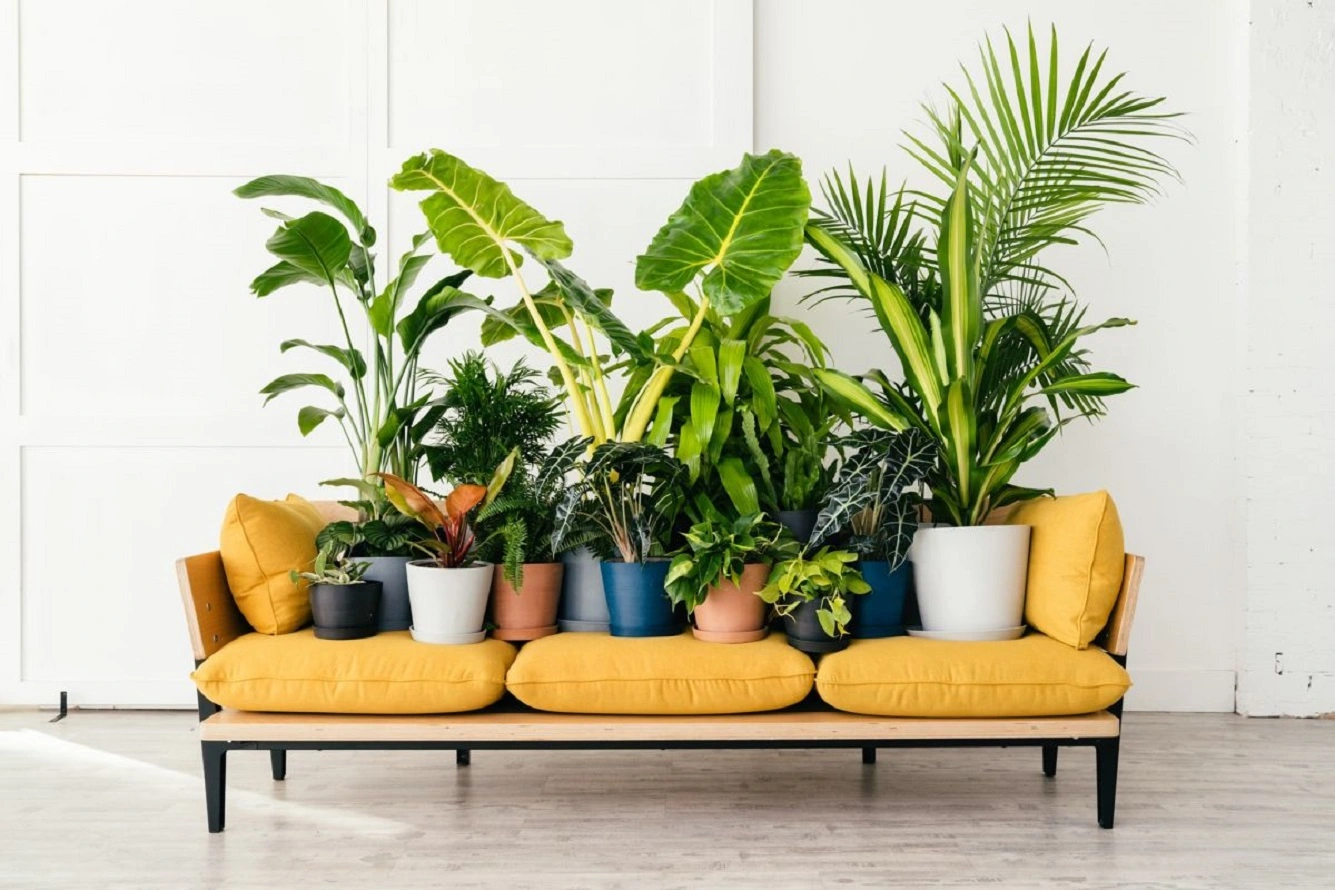
Quali sono le caratteristiche delle piante da interno a bassa luminosità?
Il fatto che alcune piante da appartamento amino l’ombra non significa che non abbiano bisogno di luce. È necessaria per la fotosintesi, ma in questo caso sono sufficienti quantità di luce inferiori. In ogni caso, la mancanza di raggi solari diretti non influisce sulla loro crescita o fioritura quanto altre piante che hanno bisogno di luoghi luminosi per svilupparsi.
Le piante da interno con poca luce si riconoscono in genere per le foglie molto sature di colore verde scuro ma non è una regola, perché alcune specie hanno colori completamente diversi.
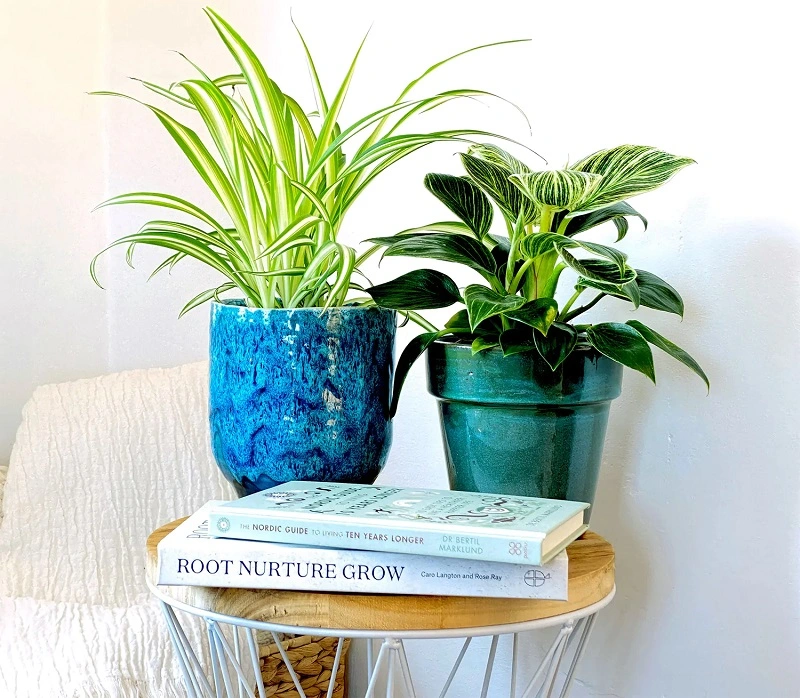
Qual è la posizione migliore per le piante d’appartamento con poca luce?
Le piante d’appartamento amanti dell’ombra hanno esigenze diverse per quanto riguarda il luogo di coltivazione, a seconda delle specie. Alcune piante hanno bisogno di accedere alla luce solare indiretta per sole 2-3 ore per potersi sviluppare correttamente.
Le piante d’appartamento che preferiscono la mezz’ombra sono le più diffuse Queste posizioni hanno accesso alla luce solare indiretta per diverse ore al giorno. A seconda della stagione, si tratta di un periodo compreso tra 3 e 7 ore al giorno.
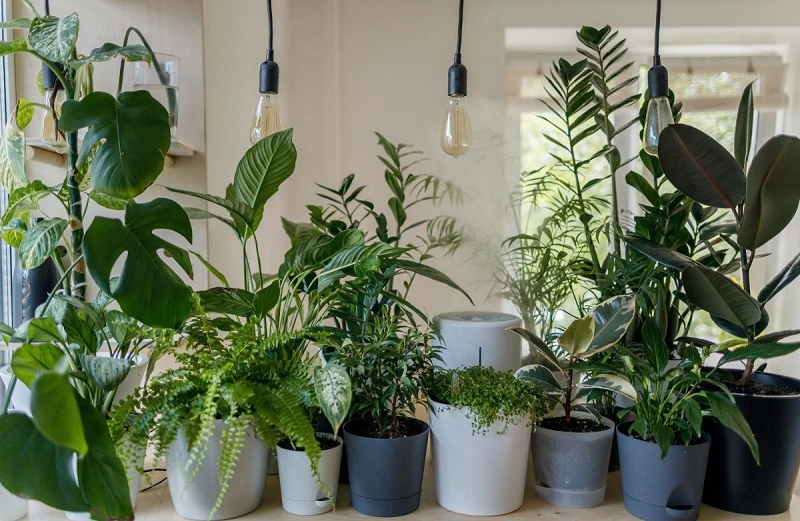
Tipi di piante da interno a bassa luminosità
Le piante d’appartamento a bassa luminosità sono suddivise in diversi gruppi con differenti tipi di crescita. Grazie a ciò, ogni amante del verde può scegliere quelle che preferisce o abbinarle a un arredamento personalizzato. I gruppi comprendono:
- specie classiche in vaso che possono essere collocate su scaffali, supporti per piante o mobili,
- piante sospese per stanze buie,
- piante rampicanti che amano l’ombra.

Piccole piante da interno per poca luce
Le piccole piante da appartamento che amano l’ombra sono perfette per i piccoli appartamenti. Non occupano molto spazio, il che è un grande vantaggio. Se necessario, nel caso in cui iniziassero a peggiorare, potete facilmente spostarle su un davanzale, dove prenderanno più luce solare.
Felce bottonosa
La felce bottonosa (Pellaea rotundifolia) non è una pianta molto popolare, e questo è il suo più grande vantaggio. Invece di scegliere una specie che tutti conoscono, potete decidere una pianta d’appartamento che impressionerà tutti coloro che vi visiteranno. Anche se la felce bottonosa è piccola, ha un aspetto affascinante.
Questa pianta proviene dalla Nuova Zelanda e dall’Australia. È classificata come felce, anche se ha un aspetto diverso dalle classiche piante associate a questo nome. Ha le caratteristiche foglie piccole e rotonde, che compaiono lungo steli di circa 20-30 cm.
La felce bottonosa può crescere in una stanza buia, ma richiede temperature relativamente alte per svilupparsi correttamente. 21-22°C (69,8-71,6°F) sono le condizioni migliori per questa specie. È una temperatura standard. Se il calore scende sotto i 12-13°C (53,6-55,4°F), la pianta potrebbe appassire.

Calathea
La Calathea è una pianta d’appartamento dall’aspetto piuttosto esotico che ama l’ombra - le sue proprietà non sono una sorpresa, dato che proviene dalle foreste pluviali del Brasile. Ha delle caratteristiche foglie grandi, che costituiscono la maggior parte della pianta. Hanno colori diversi: i bordi e la parte centrale sono scuri, con strisce più chiare in mezzo.
21-22°C (69,8-71,6°F) è la temperatura ottimale per questa pianta. È importante mantenere questo livello, in modo che possa svilupparsi correttamente.

Piante sospese per stanze buie
Le piante da appartamento sospese che amano l’ombra sono perfette per decorare le pareti interne. Si possono usare non solo in un soggiorno, ma anche in un corridoio, perché non hanno bisogno di molta luce solare. Questo gruppo è piuttosto numeroso e comprende piante come le felci in vaso.
Edera grappolo d’uva
L’edera grappolo d’uva (Cissus rhombifolia) è un esempio perfetto di pianta da ombra per interni per gli appassionati di piante alle prime armi. È una pianta rampicante che richiede poche cure. In pratica, ha bisogno solo di essere annaffiata di tanto in tanto. Non bisogna però annaffiare troppo, perché questa pianta sudafricana non ama i terreni troppo umidi.
I rami dell’edera hanno una lunghezza caratteristica. Una pianta di pochi anni può sviluppare magnifici fusti lunghi 3 metri.
Anche le foglie di questa pianta d’appartamento sono degne di nota. Non sono grandi, ma la loro forma è interessante. Assomigliano a una vite, che a molti risulta familiare.
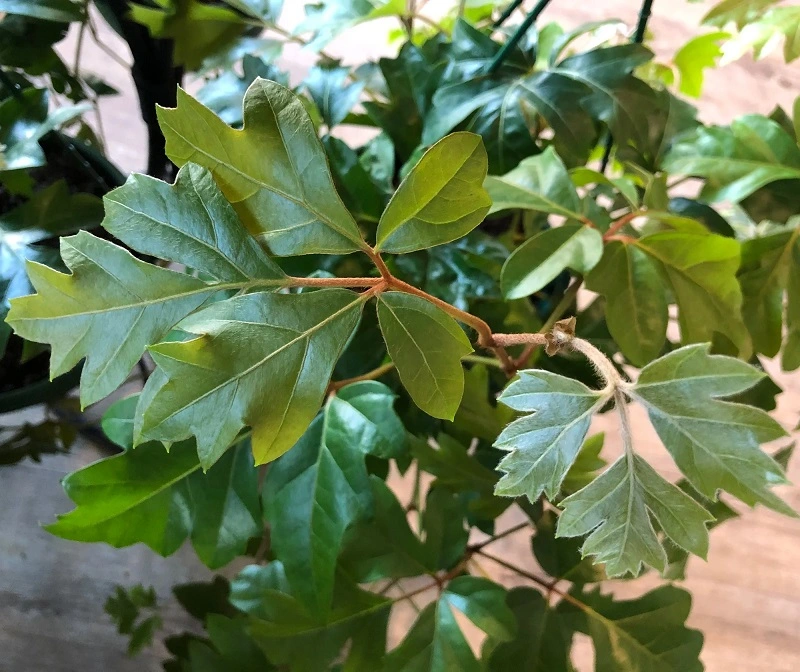
Pianta da preghiera ‘Fascinator Tricolor’
La Maranta leuconera ‘Fascinator Tricolor’ è un’intrigante pianta da ombra per interni dal carattere penzolante. I suoi rami non sono lunghi, ma la superficie e la forma delle foglie cadono verso il basso. Gli steli di solito non sono più lunghi di 30-35 cm (12-14 in).
Questa varietà di pianta da preghiera presenta colori degni di nota. Le foglie presentano un interessante disegno. Il colore di base è verde scuro. Il centro è verde chiaro. Anche le nervature rosse provengono dal centro.

Piante rampicanti da interno a bassa luminosità
Le piante da appartamento a bassa luminosità di tipo rampicante sono perfette, ad esempio, per i giardini verticali. In genere non sono difficili da curare, anche se molto dipende dalla specie. Date un’occhiata alle piante più popolari di questo gruppo.
Filodendro a foglie di cuore
Il filodendro a foglia di cuore (Philodendron scandens) è una delle piante d’appartamento più facili da coltivare. Non ha esigenze complicate e, soprattutto, non richiede molta luce solare per crescere correttamente. Il fatto che possa essere modellata con la potatura è un altro vantaggio. Si consiglia di dotare la pianta d’appartamento di un paletto di bambù o di una struttura speciale per far arrampicare i rami.
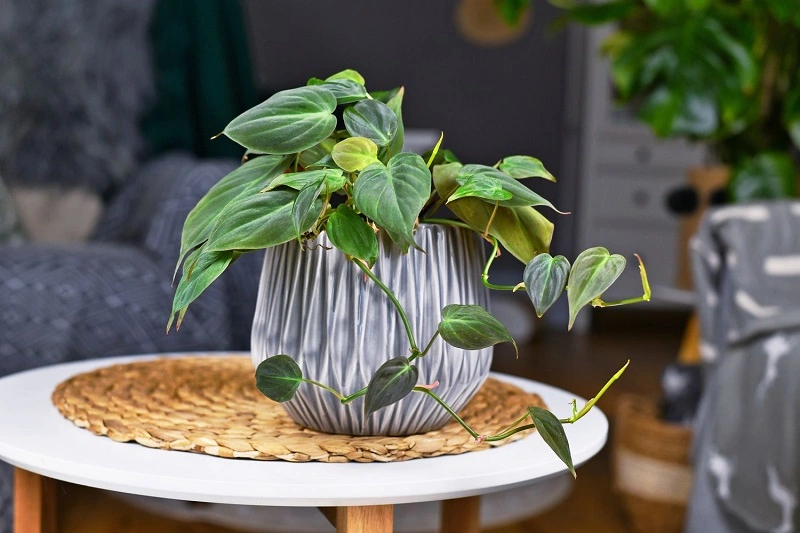
Pothos satinato
Il pothos satinato (Scindapsus) è una pianta da interno amante dell’ombra, poco conosciuta anche dai giardinieri più esperti. La pianta sembra essere sottovalutata, ma è affascinante e merita un riconoscimento.
Il pothos è originario dell’Asia, dove cresce naturalmente nelle foreste pluviali. Sviluppa i caratteristici steli lunghi e sottili e un gran numero di foglie. La superficie fogliare è l’elemento più interessante della vite, in quanto è maculata e ha un aspetto intrigante.
La vite amante dell’ombra fiorisce nel suo habitat naturale. È raro che si verifichi in ambiente domestico, anche se può capitare: è un segno che la pianta gode delle migliori condizioni di crescita possibili.

📍 Le piante da ombra per interni sono difficili da coltivare?
Le piante da interno a bassa luminosità non sono molto esigenti, il che le rende perfette per i giardinieri principianti. Si noti che ogni specie richiede un trattamento individuale. Alcune piante richiedono più luce solare, altre meno. Lo stesso vale per l'annaffiatura, la potatura e la concimazione.
📍 Quali sono le piante da ombra per interni più popolari per i vasi?
Le piante più popolari che amano l'ombra sono sicuramente il giglio della pace e l'edera comune. Altre specie comunemente coltivate sono la felce bottonosa, lo scindapsus e il filodendro. Molto interessante è anche la maranta, una pianta d'ombra da interno ricadente.
📍 Le piante da appartamento in condizioni di scarsa illuminazione necessitano di annaffiature frequenti?
L'annaffiatura è una questione individuale per tutte le piante d'appartamento amanti dell'ombra. La maggior parte delle specie di questo tipo è in grado di immagazzinare acqua. Per questo motivo, e per lo scarso accesso alla luce solare, non è consigliabile annaffiare frequentemente.
📍 Dove acquistare piante per stanze buie?
Le piante d'appartamento che amano l'ombra sono molto popolari e comunemente disponibili. Si possono acquistare facilmente nei negozi di giardinaggio, nei negozi di fiori e spesso anche nei supermercati. Inoltre, molti vendono queste piante online.
Articoli in primo piano




